Your Cart is Empty
FREE SHIPPING ON ORDERS $79+ IN THE CONTINENTAL US
FREE SHIPPING ON ORDERS $79+ IN THE CONTINENTAL US
Explore

Mystery Health Issues: Using the Elimination Diet to Address Food Sensitivities By Dr. Jason Dave
June 27, 2021 5 min read
Doctor’s Note
A new series featuring leading physicians who love plants as much as we do!
Do you have a food sensitivity or intolerance? They can emerge in our lives as recurring mystery health issues, starting with inflammation, stomach discomfort, or lingering fatigue. Here are some typical reactions to food that many of us see in our bodies when there are sensitivities.
- Dry, inflamed or itchy skin
- Gastrointestinal issues, such as pain, bloating, constipation and diarrhea
- Fatigue and brain fog
- Headaches and migraines
- Joint aches and pain
The answer to these persistent problems might be on your dinner plate.In fact, the elimination diet is the gold standard in identifying food sensitivities.People who end up eliminating problematic foods can have amazing results simply by avoiding their triggers.
The tough part is figuring out how to identify those foods. The good news is, the elimination diet goes hand in hand with awell-designed cleanse, so you get the nourishment you need while removing problematic foods.
How Does an Elimination Diet Work?
An elimination diet consists of two parts: elimination and reintroduction.
The elimination (or avoidance) phase
The elimination phase involves completely avoiding foods you suspect that trigger or aggravate your symptoms for a short period of time, typically for 2–4 weeks. Most individuals find that foods such as tree nuts, corn, soy, dairy, gluten-containing foods, certain meats, eggs and seafood can trigger or aggravate their symptoms.
While in this phase, you can determine if your symptoms are due to the eliminated foods or something else. If your symptoms still remain after eliminating these foods for 2–4 weeks, it is best to talk to your physician about other causes.
When following the juice cleanse schedule during your elimination diet, I recommend something like the following schedule- you can choose which juices you would like to include in your diet, but popular options would be the7 day juice cleanse for on the go folks or the LIFE bundle for people who want to do it longer term.

8 AM:Vegan Vanilla Proteini as breakfast with a clean, organic plant-based protein from multiple plant sources.
10:00 AMOrganic Pressed Greens as a mid-morning snack with easily digestible and nourishing superfood greens.
12:00 PMClean Meal with elimination foods removed
2:00 PMRevive Beets + Roots for a liver detoxifying and energy boost
5:00 PMPineapple Chia Cleanse as rich source of superfood fiber for a daily deep cleanse that still restores your gut.
6:00 PM OptionalClean Meal with elimination foods removed
8:00 PMImmunity Wellness to support your body’s repair at night and to promote a healthy inflammatory response from the detoxification.
The reintroduction (or challenge) phase
In this phase, you reintroduce the eliminated foods gradually back into your diet. Each food group should be reintroduced individually, over 2–3 days, while looking for any symptoms. During reintroduction of foods, keep an eye out for symptoms such as:
- Joint pain
- Fatigue
- Skin changes (rashes, etc.)
- Migraines or headaches
- Digestive complaints (stomach cramps, abdominal pain, bloating, changes in bowel habits)
When you reintroduce a particular food group and experience no symptoms, you can assume that it is fine to eat and move on to the next food group. However, if you experience symptoms like those mentioned above upon reintroduction of a particular food group, then you have successfully identified a trigger food and should remove it from your diet.
What Foods Should I Avoid on an Elimination Diet?
There are many different versions of the elimination diet. Typically, the more foods you remove during the elimination phase, the more likely you will discover which foods can aggravate or trigger unwanted symptoms.
Common foods that are usually removed during the elimination phase include:
- Soy-based foods (avoid tofu, miso, tempeh and soy sauce).
- Oranges and grapefruits.
- Dairy (e.g., yogurt, milk, cheese, ice cream, butter).
- Nuts (e.g., peanuts and other tree nuts).
- Fish and meats (e.g., processed meats, beef, chicken, pork, shellfish and eggs).
- Unhealthy fats (eliminate margarine, hydrogenated fats, saturated fats, and trans fats).
- High sugar foods (avoid honey, corn syrup, maple syrup, white sugar, all chocolate, desserts, pastries, agave nectar, and high-fructose corn syrup)
- Starchy foods (avoid corn, barley, spelt, rye, oats and gluten-containing foods such as breads).
If there are other foods (in addition to the ones listed above) you believe that make you feel uncomfortable, it is highly recommended to remove them as well. We highly recommend that you work with a functional medicine physician and/or licensed dietician so they can help you identify other potential food sensitivities or intolerances that you might have that are not on this list.
What Health Concerns Can an Elimination Diet Help With?
Generally speaking, the elimination diet can help you discover foods that may be causing your uncomfortable symptoms, which can be related to inflammation. Below are just some examples of conditions where the elimination diet has been shown to help, and are supported by studies.
- Irritable Bowel Syndrome (IBS) – In onestudy, those who followed through with an elimination diet reduced their symptoms by up to 26%. For additional information about IBS, and other approaches that can help, please visit our blogOvercoming Irritable Bowel Syndrome.
- Attention-deficit/hyperactivity disorder (ADHD) – In a research analysis, which looked at 20 studies, investigators found that restriction of certain foods (in which participants were sensitive to) on an elimination diethelped improve ADHD symptoms in children. Children should only follow an elimination diet under a physician, as they can restrict many essential nutrients that are important for growing children.
- Eczema – Asmall study found that an elimination diet reduced symptoms in those with eczema and helped identify their trigger foods.
- Chronic migraines – In a small trial, those with frequent migraines who followed an elimination diet found that it significantlyreduced the frequency of migraine episodes.
If you feel like you need some additional energy support while on the elimination diet, please be sure to take an extra serving of my favorite,Revive Beets + Roots, which contains superfood root veggies such as turmeric and ginger. These ingredients also help to reduce inflammation, maintain focus, and promote liver health while on the elimination diet. I love adding one scoop of Beets to theImmunity Wellness, which gives me an instant boost you can immediately feel.
There isn’t a “one size fits all” approach to an elimination diet, as there are many different types of elimination diets out there depending on one’s food sensitivities/intolerances. In order to tailor an elimination diet specifically for you, it is highly recommended that you work with a functional medicine practitioner so they can help you identify potential food sensitivities or intolerances that you might have.
I hope this guide to the elimination diet helps you identify any problematic foods that have been troubling you. This diet is my favorite way for you to learn how to identify foods that may be contributing to some of your mystery health problems that have been around for a long time. I hope you take the time to try this diet yourselves- I look forward to hearing about your results in ourFacebook Group!
To your health,
Dr. Jason Dave
Doctor’s Note
A new series featuring leading physicians who love plants as much as we do!
For more SMART lifestyle tips like this, visit our other blogs at www.smartpressedjuice.com and follow us on Instagram or like us on Facebook. You can also visit our shop to stock up on our delicious juices.
Statements made on this website have not been evaluated by the U.S. Food and Drug Administration. Information provided by this website or this company is not a substitute for direct, individual medical treatment or advice. It is the responsibility of you and your healthcare providers to make all decisions regarding your health. We recommend that you consult with your healthcare providers regarding the diagnosis and treatment of any disease or condition. Products sold on this website are not intended to diagnose, treat, cure, or prevent any disease.

